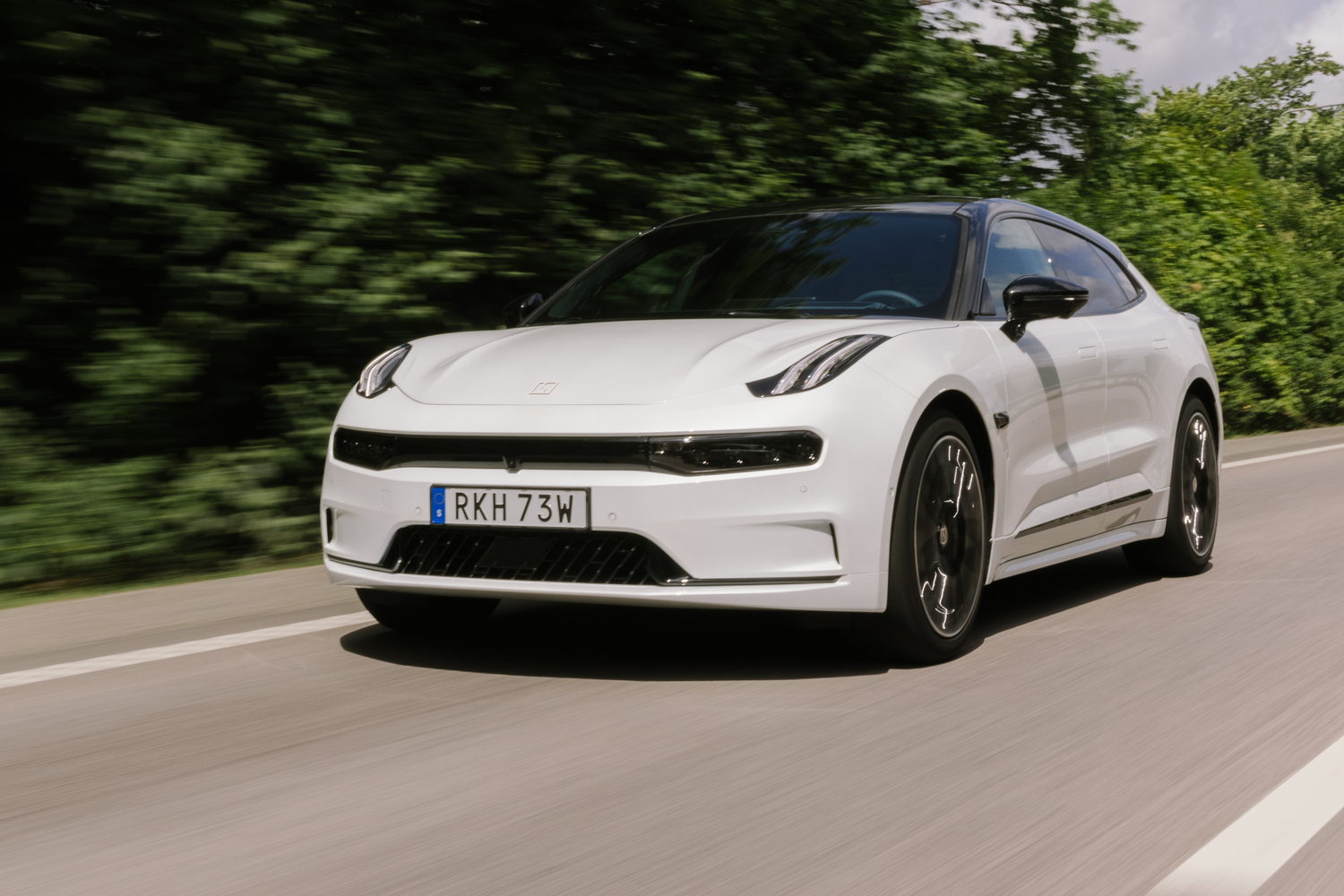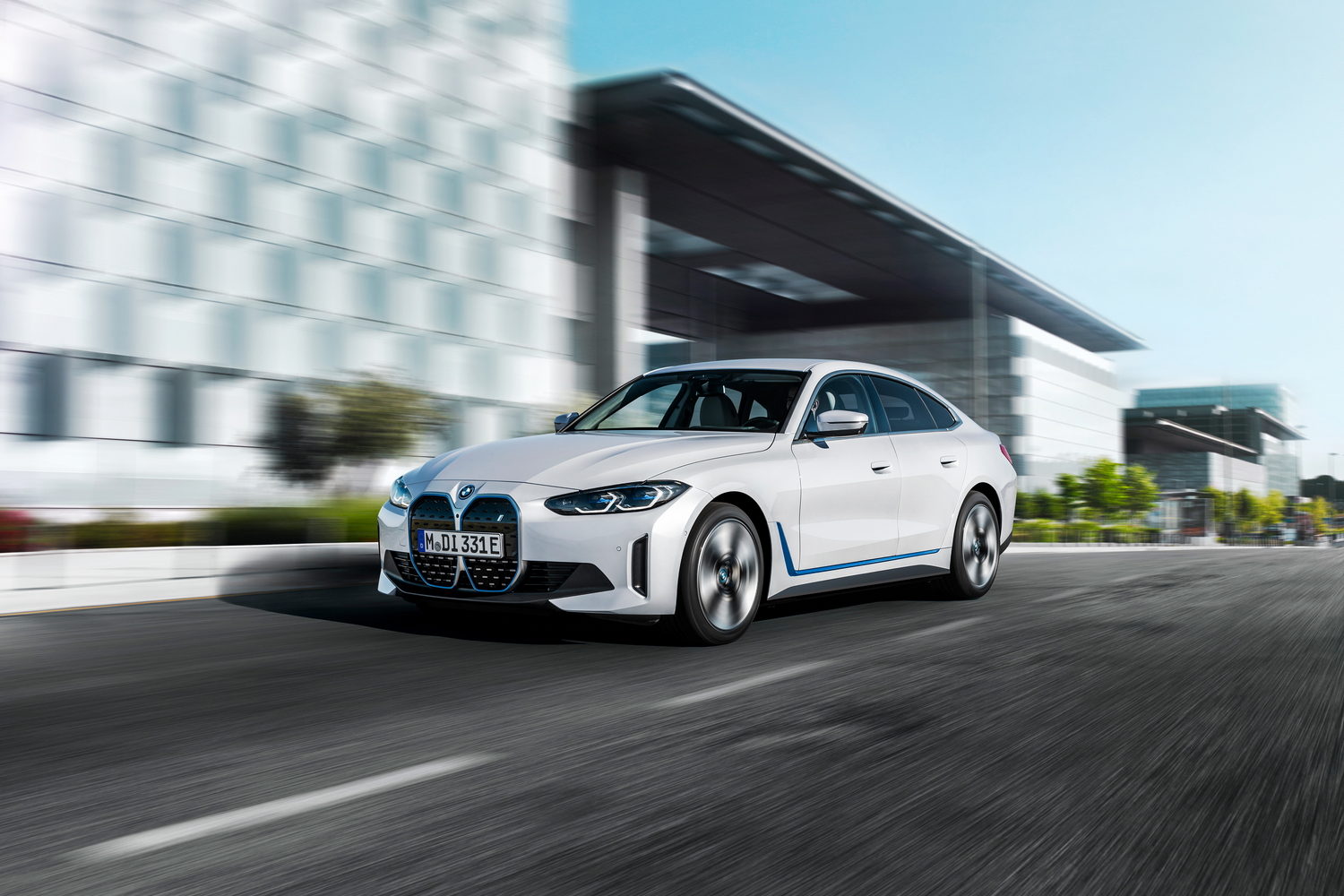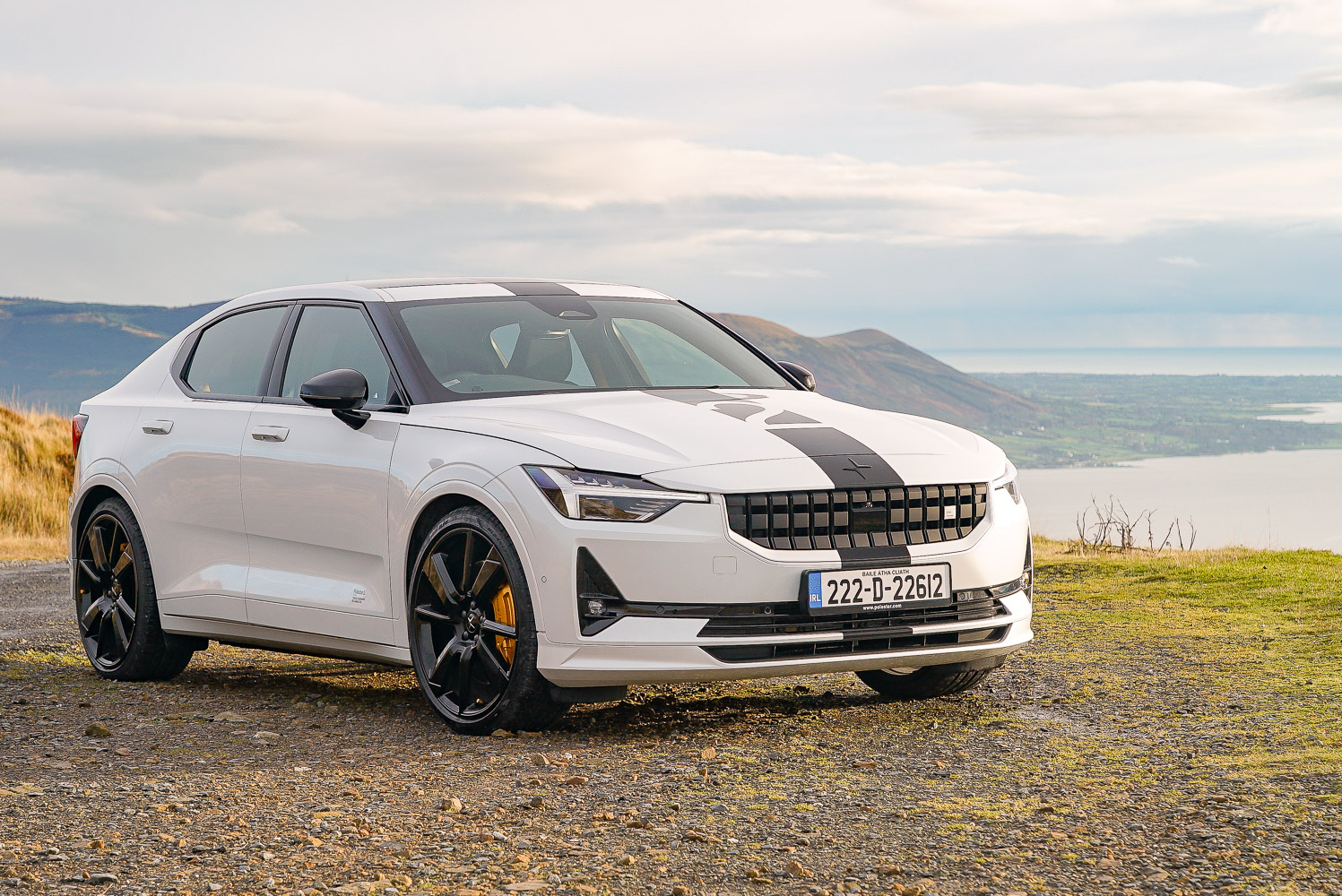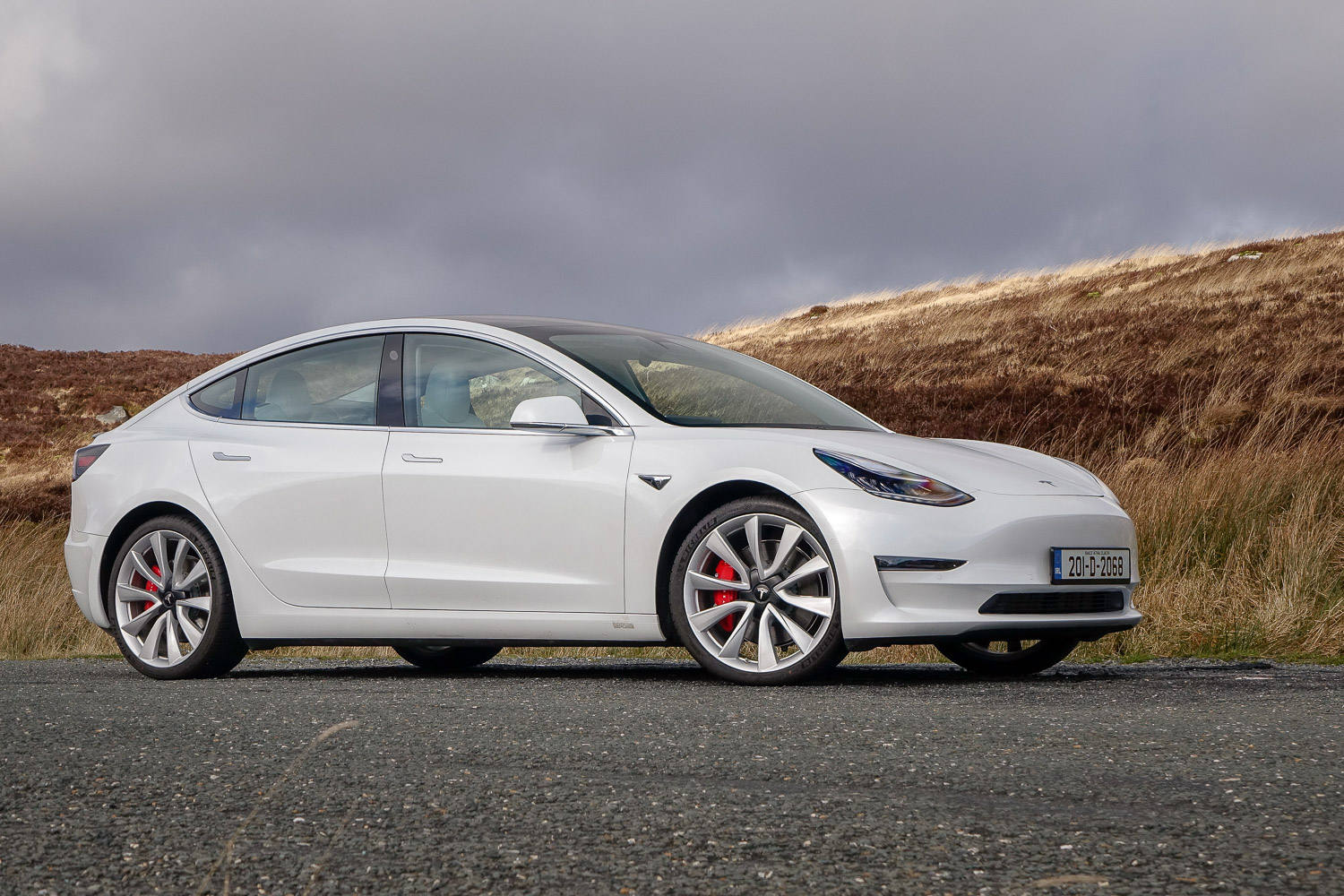Zeekr is a luxury electric vehicle (EV) brand from Geely, the giant Chinese conglomerate that includes Volvo, Polestar and Lotus in its ranks. Originally shown as a Lynk & Co car, Zeekr's opening product is this shooting brake model which is its first-ever car, hence the pragmatic name of 001. It's not confirmed for right-hand-drive markets such as Ireland yet, although the expectation is it will arrive sometime in 2025 or 2026, but as it takes aim at the likes of the Tesla Model 3, Hyundai Ioniq 5, Kia EV6 and BMW i4, among more - not to mention the Polestar 2 - the question is: does this newcomer have the chops to take on the EV establishment and should Irish buyers hope for its quick arrival?
In the metal
The appearance of the Zeekr 001 is inoffensive enough, if perhaps not a particularly bold or stand-out piece of design. It obviously looks like what it is - a car which originally was slated to be sold under Geely's sibling Lynk & Co banner. So, the headlights and front-end treatment will be familiar to you, if you ever happen to have Googled the phrase 'Lynk & Co 01'. Having said that, though, the overall appearance of the Zeekr 001 is reasonably pleasing, although the 'shooting brake' epithet might have been better replaced with the more straightforward 'large hatchback'. We like the rear styling, with its full-width light bar and illuminated 'Zeekr' logo in the middle of it, so overall we'd give the exterior an appreciative nod, stopping some way short of exultation.
The interior, though... wow. That's a different story. If we were a legacy automaker in this particular market sector, we'd be feeling a bit hot under the collar right now. It is excellent inside, there's no other word for it. You can scratch and prod and poke about in the Zeekr 001's cabin for as long as you like, but you'll be very hard-pressed to find a sub-par piece of material finishing if you do so. And you'll also delight in little flourishes and various cool metals used about the place, as well as a high-quality headlining and no seeming drop-off in the quality stakes when you sit in the back of the car. Which is cavernous, by the way, certainly in terms of legroom. Headroom? That's not quite as generous, but it's still fine enough. Oh, and you could say the same thing about boot space, too.
Then we come to the screens. There are four of them, technically speaking, in the Zeekr's ultra-plush cabin. For the driver, there's an 8.8-inch high-definition instrument cluster perched behind the steering wheel, above which a giant 14.7-inch head-up display (HUD) is beamed onto the windscreen. That, though, is eclipsed by the 15.4-inch 'floating' touchscreen for the proprietary infotainment - Apple CarPlay and Android Auto are available on this if you prefer - and finally there's yet another, 5.7-inch item in the rear of top-spec Privilege models which allows rear-seat passengers to set their climate controls.
Generally, all of these work very well and present their information clearly, with fast response rates too. About our only criticisms are that the software on the main infotainment display takes a fair degree of familiarisation to use smoothly, while the haptic touchpads on the steering wheel - which you use to adjust the mirrors and the HUD and so on - aren't great. But other than that, we are deeply, deeply impressed by the overall ambience and general appointments of the Zeekr's opulent interior.
Driving it
Taking a remarkably similar range structure to Tesla, Zeekr offers the 001 with a single-motor, rear-wheel-drive model which it calls the Long Range, and then a couple of dual-motor, all-wheel-drive variants, one of which gets the Performance epithet. Strangely, though, this isn't the flagship, as that honour is reserved for the Privilege - it doesn't get any more power than the Performance, but it does feature air suspension, which can raise and lower the car through a range of fully 88mm (117mm of ground clearance at its lowest, 205mm at its highest).
Opting for the Long Range car sees buyers with a 200kW (272hp) motor delivering 343Nm, enough for a 7.2-second 0-100km/h time. All Zeekr 001s - based, as they are for now on 400-volt architecture - come with a 100kWh gross battery (the Chinese company doesn't say what its net capacity is, but something around 95kWh wouldn't be out of the question), allowing the Long Range to do up to 620km on a charge.
The Performance and Privilege cars, meanwhile, simply 'double' every output: so, you get 400kW, or 544hp, and 686Nm of torque, resulting in a 3.8-second 0-100km/h time and either 590km of range from the Performance, or a slightly lower 580km from the Privilege.
We drove a Privilege car and came away incredibly impressed with it. Obviously, with that torque output and four-wheel drive, it is a quick machine. There's no doubting Zeekr's sub-four-second 0-100km/h claim and if anything, it's possibly a touch conservative; the way the 001 hurtles for the horizon with its eerie, whistling calm is quite breathtaking. Astonishingly, the company is planning a quad-motor version called the 001 FR, which will have - and we're not making this up - 1,265hp and a two-second 0-100km/h time. Quite why you'd need that outrageous power, having sampled the unremitting punch of the 544hp Privilege, is beyond us at this stage.
Refinement is also strong with the Zeekr, as it rides with good grace on its air springs. It's not quite perfect, the system sometimes getting a little out of sync if you hit a series of ridges or compressions in quick succession, while it is also attempting to suspend the unsprung mass of a set of 22-inch alloys on the Privilege - something that means you do get the occasional thump from the wheels forcing its way into the passenger compartment. However, in general, wind and tyre noise are beautifully suppressed, and the car is a delight to travel along in, like all the best premium EVs generally are.
It's in the handling department where our biggest reservations about the Zeekr 001 come to the fore. Yet there are plenty of positives: the body control on the suspension is, in the main, largely excellent and assured, the brakes feel... OK, considering they have to do some regenerative work - but it's the steering which needs the highest praise. Through its three main settings, there is a tangible difference to the weighting, reactions and feel of each, with the sportiest of them being superb to deal with. So many EVs make the steering a light, feel-free zone, so the fact the Zeekr's set-up comes across as so natural is an unexpected but most welcome pleasure.
However, start chucking the 001 about and you're suddenly acutely aware of what a big, heavy car it is. This thing measures almost five metres long from tip to tail, with a wheelbase stretching for one millimetre shy of three metres within that frame. The Zeekr shooting brake also weighs 2.2 tonnes in its lightest trim, which is not this Privilege - which tips the scales at a portly 2,350kg. Push up to the limits of grip and the 001 becomes scruffy, washing into understeer (where the front of the car goes straight on, despite you turning the steering wheel to one side or the other) and losing control of its body on its air springs. This pogoing around mid-bend, tyres squealing, as it attempts to regain its composure is discomfiting, so you soon rein the Zeekr back in and drive it well within itself. It's not a major deal-breaker on a luxury, long-distance EV like this, which is designed to spend most of its time cruising at motorway speeds, but there are rivals - most notably BMW's i4 and the distantly related Polestar 2 - which do cornering better than the 001.
What you get for your money
All Zeekr will say at the moment is that it will be in "all major markets in western Europe within three years". There is a belief that right-hand-drive cars are somewhat closer to going on sale than 2026, however, as Zeekr must satisfy key global territories like Japan, Australia, South Africa and the UK if it wants to succeed, so we might be getting the company's cars in 2025... Safe to say that how much this new model will cost will ultimately be the key to its success (or otherwise), but where the 001 is on sale in Europe, it is very competitively priced and stacked with equipment from base level upwards. Fingers crossed that will be the case when we're told that Zeekr will be coming to Ireland.
A quick word on charging rates here. The 001 is 'only' based on 400-volt architecture, although the super-rapid 001 FR that is slated to follow soon gains 800-volt technology, but even so the maximum charging speed of the current Zeekr range is a still-quick 200kW DC. That means it will go from 10-80 per cent battery in 30 minutes at its maximum connection speed, while the company also generously fits all of its cars with a 22kW AC onboard charger as standard (this is frequently a cost option on much of its opposition, if it's even offered at all) - so plugged into a three-phase charger, it'll take the Zeekr just five-and-a-half hours to recharge its battery from empty.
Summary
The Zeekr 001, pending its yet-to-be-confirmed on-sale date, is in many regards a supremely polished product. It has a genuinely magnificent interior, one or two minor ergonomic blunders aside, as well as good driving range, loads of power and refinement in spades. OK, so the exterior looks are a touch generic and the handling gets ragged if you decide to extend the car on your favourite road, but in all other respects the 001 feels like it thoroughly deserves to be mentioned in the same premium breath as well-established EVs from makers like Tesla, Polestar, BMW, Audi and Mercedes. And that, we're sure you'll agree, is no mean feat from a fledgling company which is only two years old.




































